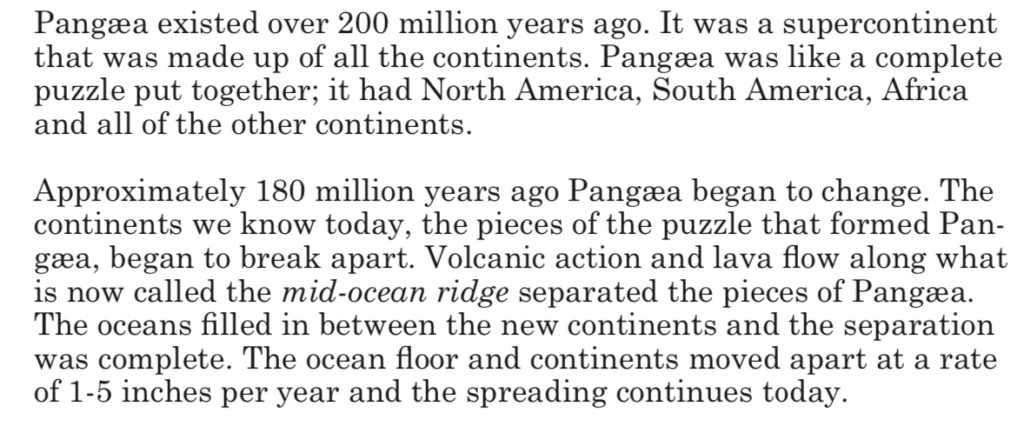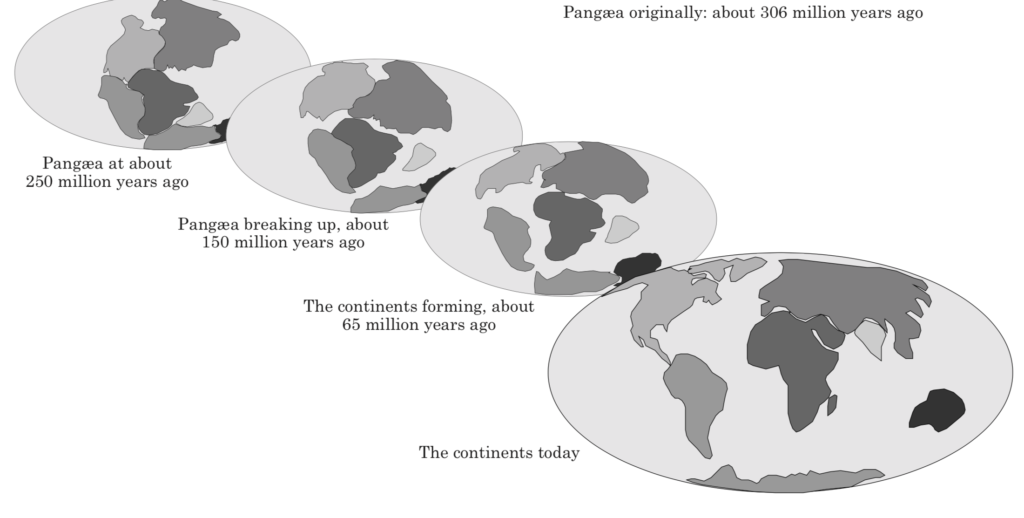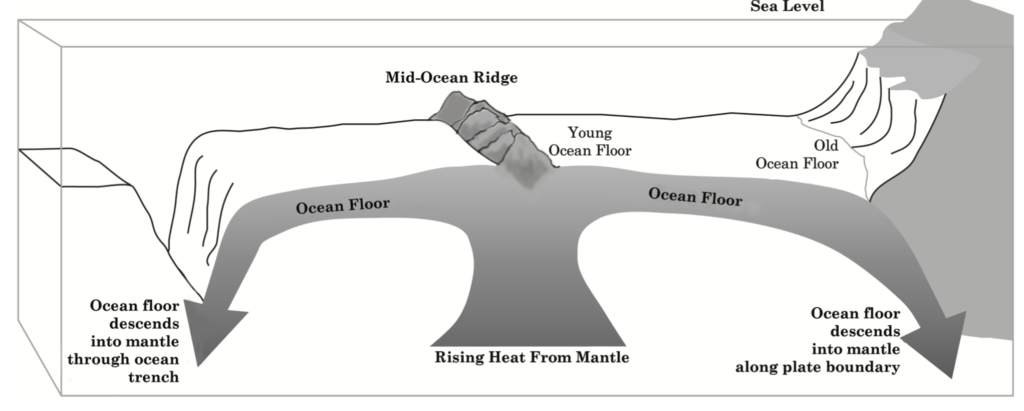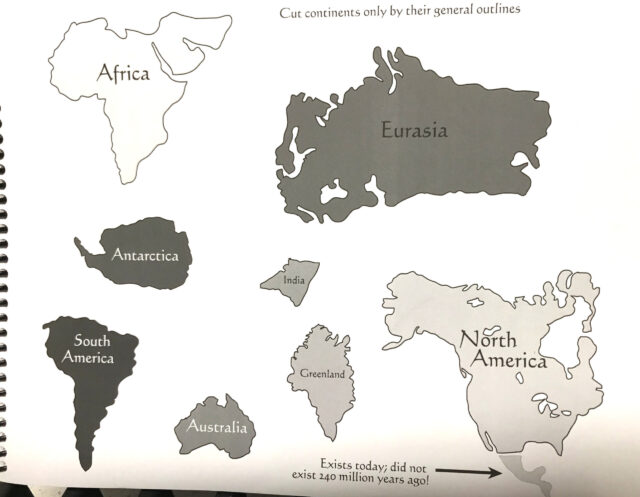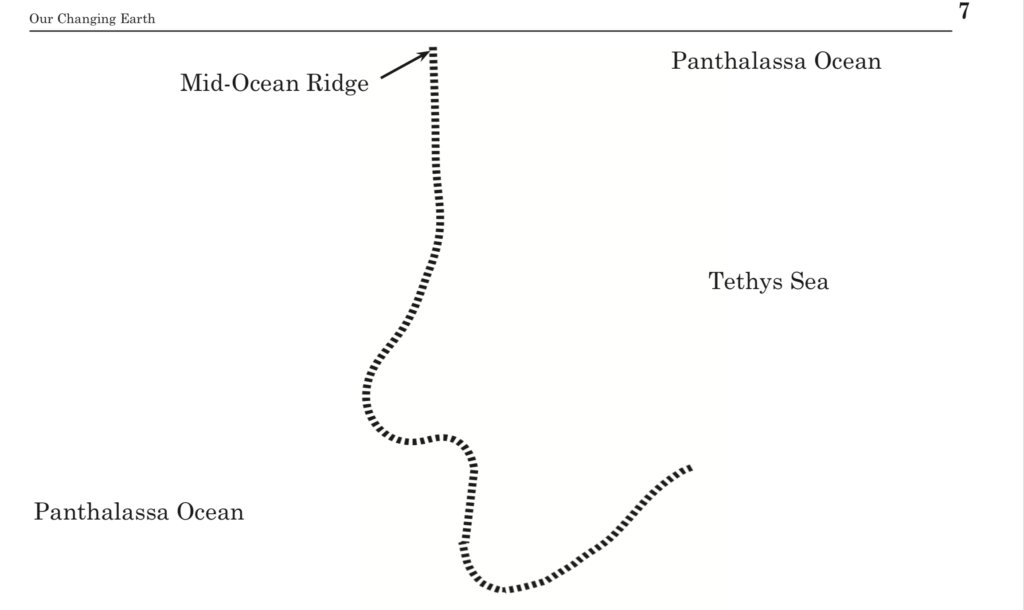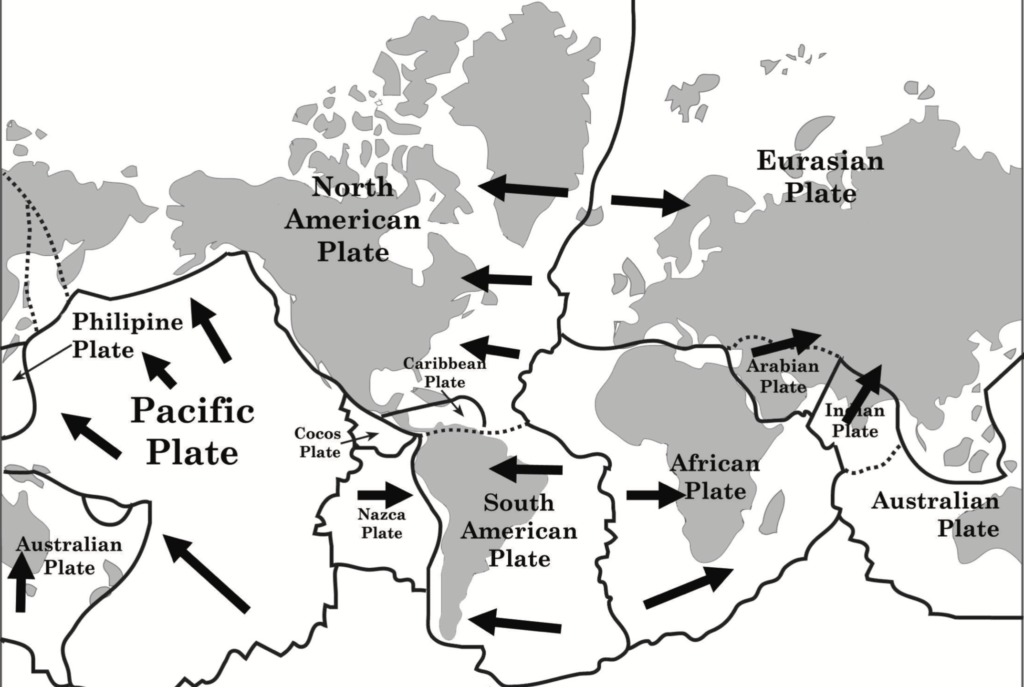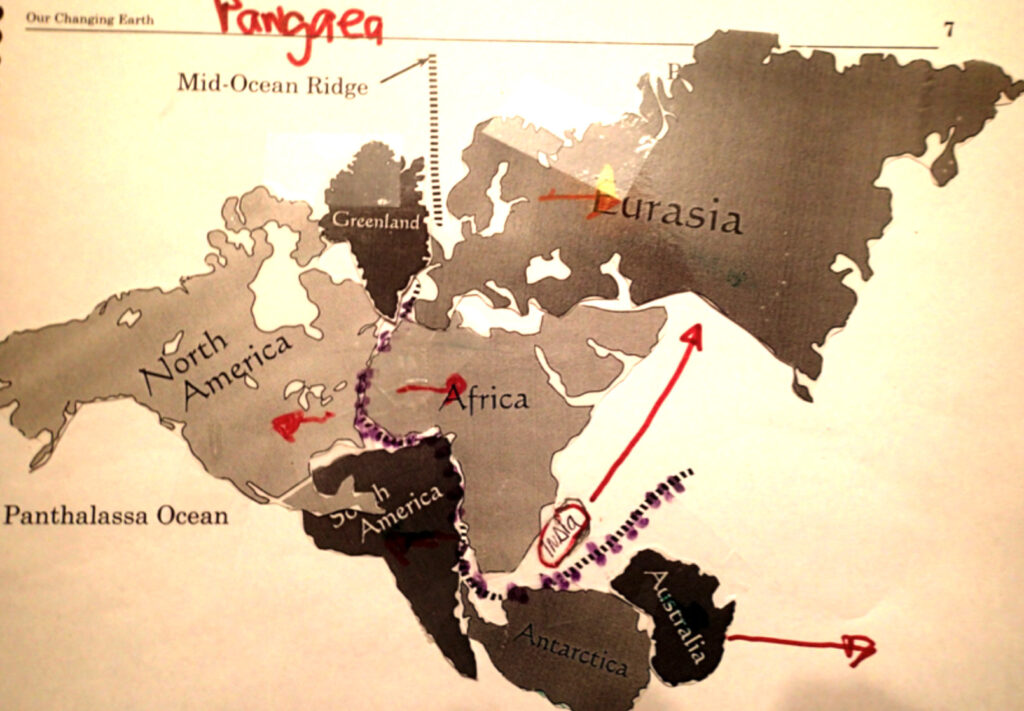From: Whales in the Classroom – Oceanography
By Lawrence Wade
Graphics by Stephen Bolles
The Earth itself has many stories to tell because it is always changing. One of the stories has to with the continent known as Pangaea. The Earth has not always looked the way it does now, with all of its beautifully shaped continents.
So you want to be an Oceanographer
1. Download the cutout pages 6 & 7 below to build the supercontinent of Pangaea. Use the mid ocean ridge as a guide, since many continents broke apart along it. [Hint: start with Africa and add South America.]
- If you have an Oceanographic Map, find the Mid-Ocean Ridge on the oceanographic map and show students how the continents have spread apart over the past 180 million years.
- Have students put a title on page 7 “Pangaea”
4 Students can cut out the continents by their general outline or put a continent underneath the page 7 in the correct location and trace it.
- Show the students how Greenland, North America and South America are to the West of the Mid Ocean Ridge today, so they must have begun “hugging” the west side of the Mid Ocean Ridge. The same is true of Africa and Eurasia, only they are to the East of the Mid Ocean Ridge.
- Start by showing where Africa goes and make an arrow showing the direction Africa moves in (page 9).
- Place South America , North America, Eurasia, and Greenland. Show the direction that each continent is moving (page 9) and make sure that the continents are placed on the correct side of the Mid Ocean Ridge. When they are drawn or taped in, have them use a black marker and show where the Mid Ocean Ridge is in relation to the continents.
- Put in India and show how it moved northward and literally crashed into Eurasia – forming the Himalayan Mountain Range. It is still pushing into Eurasia today and causing the mountains to grow higher
- Put in Antarctica and Australia south of the Mid Ocean Ridge and show the direction they both traveled.
Student Cutout Pages
Page 6
Page 7
Download Student Pages 6 & 7
Page 9 Shows the direction that the plates are moving
Finished Student page
To view the entire Whales in the Classroom curriculum go to:

